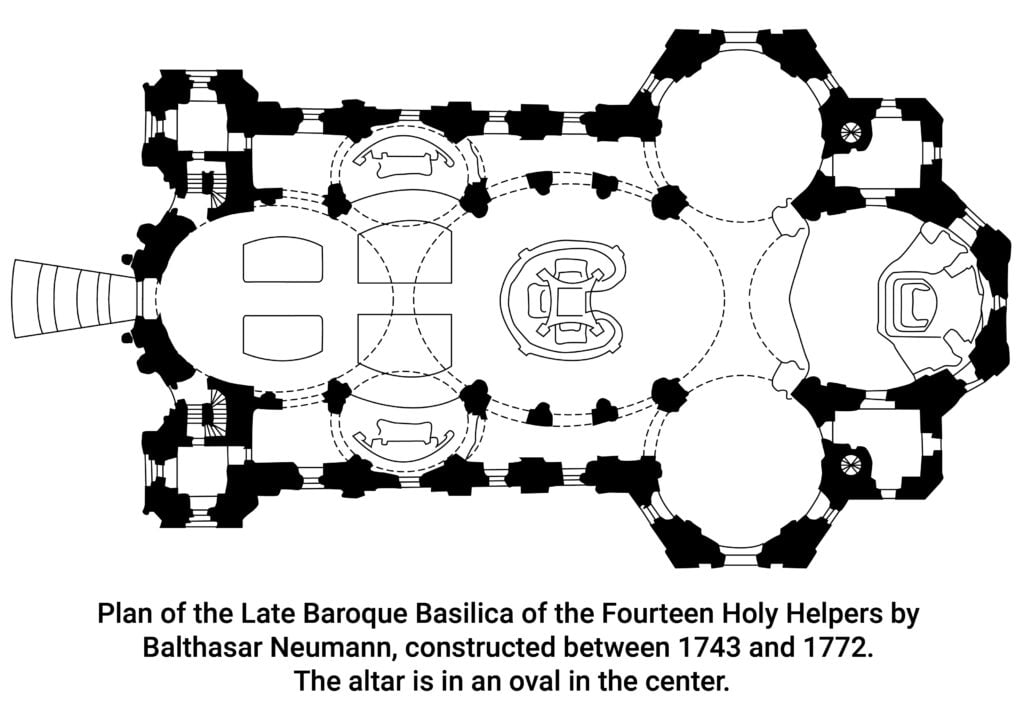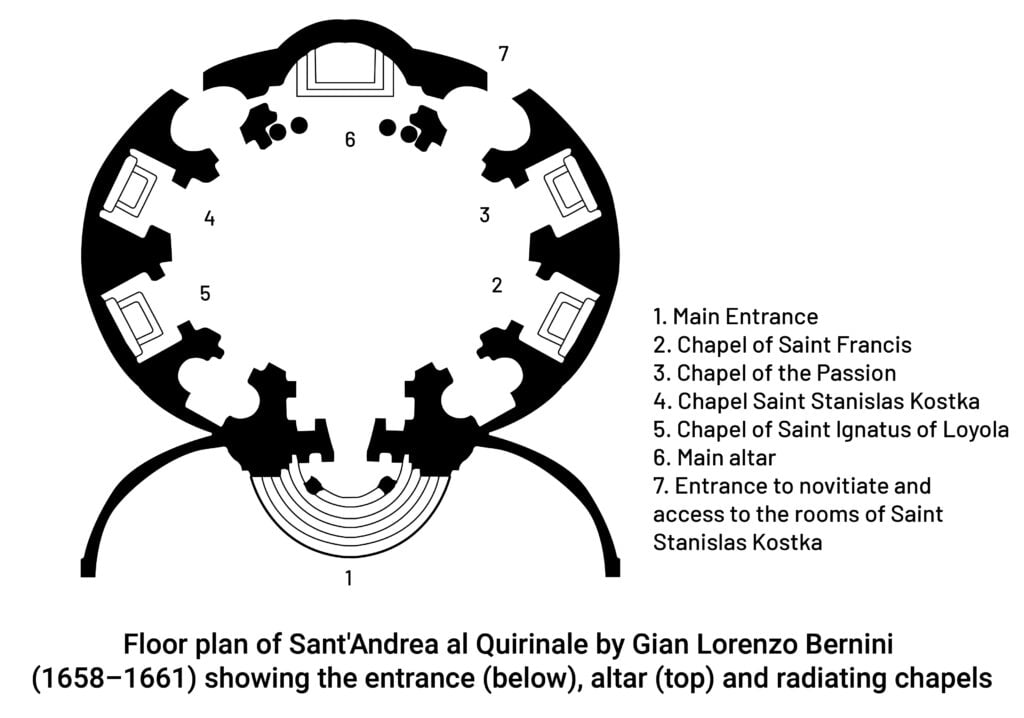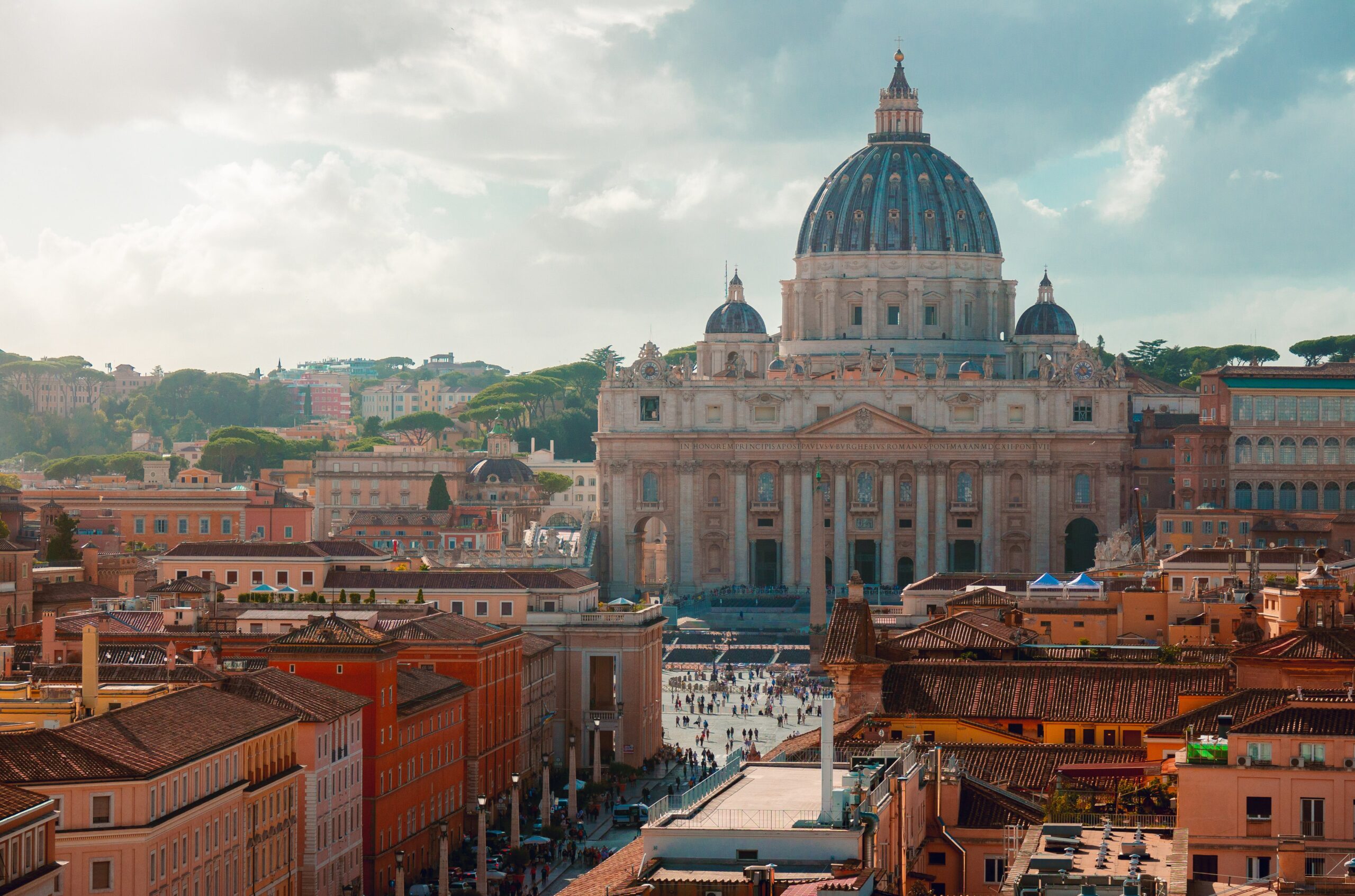What is Baroque Architecture?
Baroque architecture is a remarkable architectural style that emerged in Italy in the late 16th century and lasted until the mid-18th century. It became extremely famous in Italy and then expanded throughout Europe, including Spain, Bavaria, Portugal, France, Germany, Austria, and eventually the United States. The baroque architecture style was preceded by the Renaissance architectural style, and later it was followed by the Rococo architectural style, which is also known as late baroque architecture.
The Baroque style is characterized by its detailed and dramatic forms, lighting, decoration, a sense of grandeur, use of bright colors, illusion, painted ceiling, and others. Architects of the Baroque style also took some base elements of previously known Renaissance architecture. The elements include domes and colonnades. They used them and made them bigger, higher, grander, more decorative, and more dramatic. They played games with the architectural features and sometimes left them incomplete. The baroque style was meant to showcase the glory of the Roman Catholic Church. [1] [2]
History and Time Period of Baroque Architecture
Baroque architecture emerged in Italy and spread throughout the world from Europe. This style was not intended to change tastes and ideologies. “The origins of Baroque architecture are often associated with religious conditions beginning in the late 16th century,” Foster says. At the time, Protestants had rejected the authority of the Roman Pope and had rejected numerous Roman Catholic teachings. This was referred to as the Protestant Reformation.
The Baroque architectural style, recognized as part of the Counter-Reformation, played a crucial role in the Church’s efforts to reengage congregants in Catholic worship. The construction of churches aimed to inspire awe and evoke deep emotions, with the belief that this approach could draw parishioners back to Catholicism. Architects, commissioned by the Church, were tasked with reimagining elements of Renaissance architecture, such as domes and colonnades, elevating them to grander and more dramatic proportions.
Internally, every design choice was strategically made to captivate visitors’ attention upward, fostering an atmosphere where worshipers felt as though they were gazing into heaven. Techniques like Quadratura or trompe-l’oeil paintings on ceilings, along with the incorporation of winding columns suggesting upward movement, were frequently employed to contribute to this immersive experience. [3] [4]
Features and Characteristics of Baroque Architecture
- Large domes or cupolas. (Generally at the center of the building.)
- Grand stairways
- Solomonic columns that provided an illusion of movement
- Elliptical or oval spaces, eliminating right angles.
- Elaborate motifs and decorations.
- Gilded sculptures on the interior and exterior.
- Attention-grabbing features like painted or vaulted ceilings, curved walls, columns or colonnades, sculptures, arches, fountains, etc.
- Double-sloped mansard roof
- Twirling and swiveling colonnades
- Rough stone and smooth stucco are used throughout walls and doorways.
- Dramatic central projections on an external façade
- Fragmented or deliberately incomplete elements.
Plans


Major Baroque Architects
Notable architects associated with the Baroque period include Gian Lorenzo Bernini and Francesco Borromini in Italy, Jules Hardouin-Mansart in France, Johann Bernhard Fischer von Erlach in Austria, and Agostino Barelli in Germany, among others.
Some of the famous works by these architects include Saint Peter’s Square and San Carlo alle Quattro Fontane in Rome, the Hall of Mirrors Palace in France, the Palais Auersperg in Vienna, the Nymphenburg Palace in Munich, and several others.
What is the importance of Baroque architecture?
Understanding Baroque architecture is crucial for unraveling the human story, as it serves not only as a lasting reminder of a pivotal historical period but also as a testament to the desires and ideals of Europeans during that time. Additionally, Baroque architecture holds significance as one of the first architectural styles to gain global prominence, exemplifying the manner in which architecture can convey cultural messages. Its study provides insights into the broader historical and cultural context, highlighting the impact and widespread influence of this distinct aesthetic period. [3]
Interesting facts about Baroque Architecture
- Baroque architecture shares similarities with Renaissance architecture.
- Renaissance (15th-16th centuries) precedes the Baroque period.
- Baroque artists and architects excel in manipulating light.
- Baroque marks one of the earliest instances of artists closely considering light. That’s why material finishes in Baroque selected for reflective qualities, emphasizing light dynamics.
- Baroque architectural style encompasses various styles and periods.
- Two main Baroque styles: full Baroque and restrained Baroque.
- The term “baroque” means imperfect pearl. [2]
Examples of Baroque Architecture
- St. Paul’s Cathedral, London.
- Winter Palace, St. Petersburg.
- Karlskirche, Vienna.
- Palace of Versailles, Versailles.
- Les Invalides, Paris.
- St. Peter’s Square, Vatican City.
- San Carlo alle Quattro Fontane, Rome.
- St. John’s Co-Cathedral, Valletta, Malta.
To read an assignment on Baroque Architectural Style, click below:
Baroque Architecture











